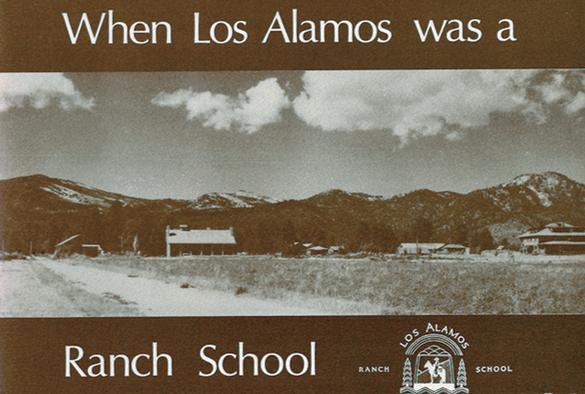 The first published book by the Los Alamos Historical Society’s press. Courtesy/LAHS
The first published book by the Los Alamos Historical Society’s press. Courtesy/LAHS
By SHARON SNYDER and MAXINE JOPPA
Los Alamos Historical Society
In 1973, the alumni of the Los Alamos Ranch School arranged a huge reunion in Santa Fe. Many of the former students flew to Chicago just to take a special train to Lamy, a route many of them had taken as young boys.
John Shedd Reed, CEO of the Santa Fe Railroad and a member of the LARS Class of 1933, made the cars on that special train available. Once in Santa Fe, the alumni stayed at Bishop’s Lodge, then owned by Jim Thorpe, LARS Class of 1942.
In anticipation of the “boys” returning to Los Alamos for a day, the historical society sent old photographs from the Ranch School era to the Los Alamos Monitor to publish in advance of the visit. Those same pictures, clipped from the newspapers, were displayed for the men to see during the reunion, and, naturally, they wanted copies of the photographs! The historical society explored the possibility of furnishing prints from the original photos, but that idea proved too expensive to recreate all of them in large numbers. So, another idea emerged.
All of the photos could be put together in a commemorative book that would sold to the men who had attended the reunion. With a little more thought, it seemed a good idea to add some history of the school and captions for the photographs, but all of those plans were to be carried out by a group of volunteers who knew little or nothing about publishing and had no money!
Ranch School master Fermor Church was ill (he would die within a few months), but he and his wife, Peggy Pond Church, agreed to write a short history of the school to go with the photographs.
To produce the book, the volunteers who put it all together went to the Los Alamos Credit Union and secured a no-interest loan on a “pay it back as you can” basis. With the book finally ready to go to press, the inexperienced publishers contracted with a printer in Albuquerque, but they were given a bad press run. When the books arrived, there were mistakes and even some pages missing!
Ferm Church advised, “Call them and tell them they have to run it again. They have to do it until they get it right!” In the second run, they did get it right.
The books were sent to the interested alumni, and the men sent in their money. In addition, the book was sold to many people who were simply interested in the Ranch School’s history. The volunteers took orders for the book through the mail and newsletters.
They even wore sandwich boards as publicity during a local arts and crafts show. One of those early publishers recalled that “it was exciting and scary, but the Ranch School people were wonderful.”
Those Los Alamos volunteers who took our first steps in publishing and the Ranch School men who instigated the book were the founders of the historical society’s press of today! Since that time the historical society has published more than 40 titles, with many of those issued in further editions.
In the first decades, the books were published under the imprint of Los Alamos Historical Society Publications, but in 2012 it was decided to change to the more characteristic imprint of Bathtub Row Press.
We have come a long way and are a respected small press. Our greatest achievement to date came in 2016 when Bathtub Row Press published its first book to gain serious international recognition.
That boo k was Doomed to Cooperate, edited by former Los Alamos National Laboratory Director Sig Hecker.
k was Doomed to Cooperate, edited by former Los Alamos National Laboratory Director Sig Hecker.
The two-volume, 970-page set tells the story of “how the American and Russian scientists joined forces to avert some of the greatest post–Cold War nuclear dangers.” Doomed to Cooperate has been translated into Russian, and a second edition will soon be published by a Moscow university.
How far we have come! The support of the community for its historical society and Bathtub Row Press will insure their future.
Editor’s Note: Maxine Joppa’s name was added to the byline of this article because much of the information would not have been available if she had not compiled the early history of our press. We owe our thanks to Maxine, who was not only instrumental in taking our first publishing steps but also served as Los Alamos Historical Society board president in 1975-1977.

